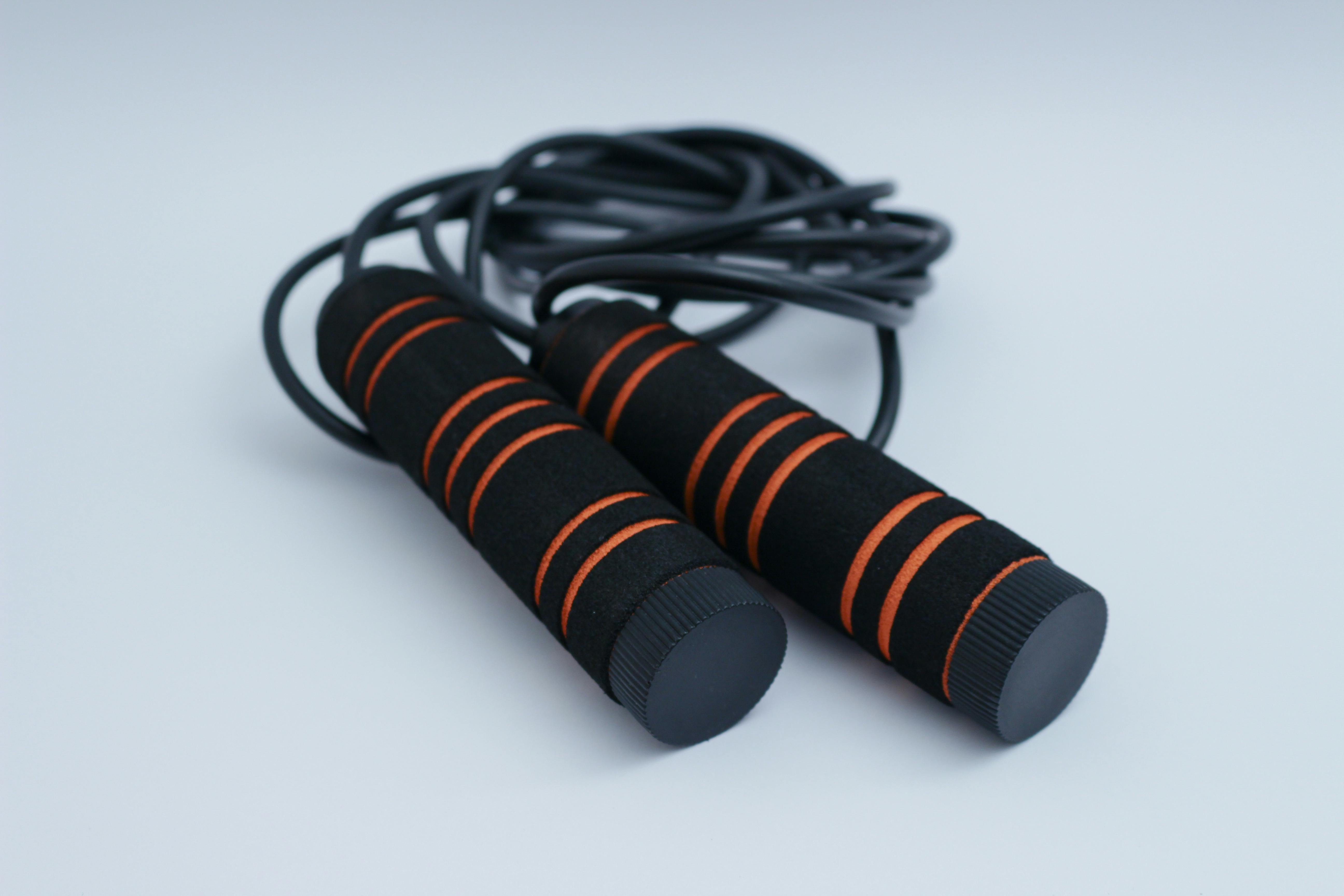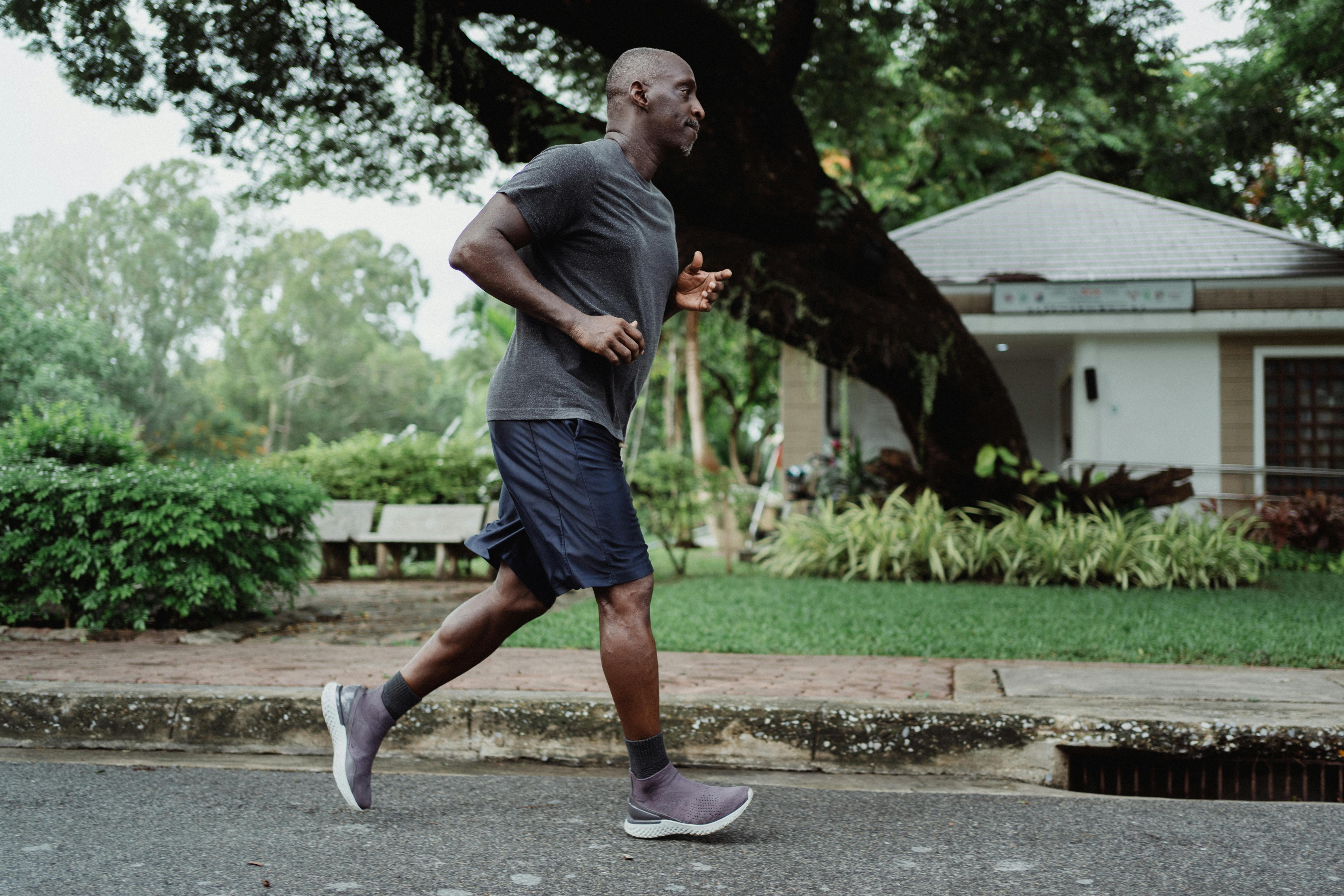Power up with plyometric training
Improve conditioning, increase muscle development, and propel your physique to new heights!
While these moves may seem more suitable for the playground, they are actually beneficial for those of us who are a few years past playing time.
These explosive activities are collectively called “plyometrics.” Simply put, plyometrics works to train your muscles to produce the greatest force in the shortest amount of time. “Athletes use plyometrics to develop muscular power, rapid force production, and dynamic agility in fast movements,” says William Kraemer, a professor of kinesiology at the University of Connecticut. “Almost every sport these days incorporates some form of plyometric training into their regimen as it improves total body power in movements like jumping and throwing, punching and starting.”
The great thing about plyometric training is that an athlete can tailor a program to improve their own particular sport. For example, if you play basketball, you’ll want to focus on your vertical jumping and shooting skills. If you’re a soccer enthusiast, you may want to be more lower-body intensive. Even recreational bodybuilders can benefit from adding some plyometrics to the mix. “Plyometrics hits certain fast-twitch muscle fibers that aren’t hit by other lifting exercises,” says Kraemer. “It also helps increase your power output by improving the rate of force production, a benefit you won’t get unless you’re doing Olympic-style lifting.”
So why not kick back and play around with plyometrics? It offers complete conditioning, improved power, increased muscle development, and is almost guaranteed to propel your physique to new heights.
UPPER BODYSUIT
Start with the lightest medicine ball available, usually 2-4 pounds, and slowly progress to a heavier ball. If you don’t have a training partner, use a solid wall or floor to throw the ball.
SIDE THROW
Stand sideways to your partner with knees slightly bent and feet shoulder-width apart. Hold the medicine ball with both hands at waist level directly in front of your body and rotate it with your torso, hips, and shoulders as far away from your partner as possible. From this rope position, unwind hard, swinging the ball and throwing it to your partner. Complete all reps on one side before switching to the other.
BENCH PUSH PASS
Lie on your back with your knees slightly bent, feet flat on the floor, and lower back naturally arched. Have a partner stand behind you and hold a medicine ball across your upper chest. Catch the ball as your partner drops it, absorbing his weight by bending your elbows and wrists and lowering it slightly toward your chest. Push the ball up immediately, tossing it straight into the air for your partner to catch.
OVERHEAD THROW
Stand facing your partner with your knees slightly bent and your feet shoulder-width apart. Hold the medicine ball with your arms fully extended and elbows slightly bent, and raise it above and slightly behind your head. Avoid arching your back and hyperextending your shoulders. From this position, contract your abs, lats, triceps, and shoulders and forcefully throw the ball toward your partner.
PUSH-UPS WITH CLAPS
Begin in the push-up position with your hands shoulder-width apart, abs tight, and back flat. Lower your body to a point a few inches above the ground, then explode up and off the ground, slamming your hands into the air below your chest before landing with your hands back in their original position. Immediately move to the next pushup and repeat, keeping ground contact time to a minimum for optimal training effects.
The training
working out
sets
representatives
Break time
side throw
2-3 (per side)
3-6
2-5 minutes
bench push pass
23
3-6
2-5 minutes
Overhead Throw
23
3-6
2-5 minutes
push-ups claps
23
3-6
2-5 minutes
LOWER BODY
Begin your lower body plyometric conditioning with the least number of sets and the maximum amount of rest. Minimize the time your feet are in contact with the ground between repetitions for maximum performance.
FOLDING JUMP
From a standing position, jump as high as possible and use your abs and hip flexors to bring your knees as high as possible toward your chest. Land soft-kneed, compress slightly, then immediately move into the next jump, keeping ground contact to a minimum.
DEPTH JUMPING
Stand on a 12-inch box, step, or other stable surface and step, not jump, from the box to the ground, landing with both feet simultaneously. Compress and absorb the impact by bending your knees and hips, then immediately jump up into the air, jumping as high as possible and landing soft-kneed.
LIMIT
Think of this as a power jump. With each jump on each side, exaggerate the movement with all parts of your body, raising your knee as high as possible and swinging your arms as aggressively as possible to jump as high and as far as possible. Instead of doing reps here, you’re aiming for distance, so with each jump, jump up and forward as far as you can until you’re moving 20 yards.
JUMPS OF 180 DEGREES
Stand with your knees slightly bent and at the same time jump up and turn 180 degrees to face the opposite direction. Land on both feet and compress as if you were going to jump again, but hold this position for a count of two before exploding and turning to face the starting direction.
The training
working out
sets
representatives
Break time
jumps
2-6
3-6
2-5 minutes
depth jumps*
23
3-6
2-5 minutes
Limit
23
20 yards
2-5 minutes
180 degree jumps
23
3-6
2-5 minutes
*Try to do this towards the beginning of the workout, as it is particularly tiring.
BEGINNERS
During the first two weeks, take the time to learn the exercises, simply going through the movements of the exercises slowly and completely to master them. Do one set of each, leaving 2-3 days of rest in between for full recovery. After those initial two weeks, start powering yourself up to max effort, keeping your sets to two and your reps to 3-4.
INTERMEDIATE
As your production improves and increases, you can increase your reps to six and your sets to three.
ADVANCED
Now aim for the moon. She tries to jump higher, throw farther, and cover more distance with each and every rep. You can drop back into the 3 rep range for a while as your body again has to adjust to a stronger stimulus. But don’t be discouraged! It only gives you a higher standard to aspire to in the coming months.
PLYO-PLANNING
Since plyometrics works very specific explosive muscle groups, it pairs well with resistance activities like cardio training and/or low-key weight training on the same day. “Just do them first, and make sure you’re fully rested before doing them again,” says Kraemer. “If you’re tired, you won’t be able to give it your all and you won’t be training the right muscle groups.”
Allow at least two rest days between plyometric sessions to ensure full recovery, remembering that the more exercises you do, the longer your recovery interval will be. If you choose to do plyometrics more than twice a week, limit your exercises per session to 1-2 instead of 3-4 to ensure adequate recovery time.
Also avoid doing more than two plyometric sessions per week for the same body group. If you are doing upper and lower body plyometrics on both days, be sure to choose different exercises for each session. “It also changes the order,” Kraemer suggests. “If you do lower body first on day one, do upper body first on day two.”
For all your exercises, keep the rep range fairly low. “Generally, stick to 3 to 6 reps per set, depending on how grueling the exercise is,” says Kraemer. “If you can get more than that, you’re probably not doing it right, you’re not recruiting the muscles you’re trying to target, and you’re generally wasting your time.”
Most important of all, remember to rest completely between each set of plyometric exercises. “You have to realize that this is not a conditioning program or an endurance test, this is a neurological recruiting activity,” says Kraemer. “You’re working at your best every time and you have to fully recover to be able to work at your best on the next set. You almost have to learn to be lazy!”
RULES AND RULES OF PLYOMETRY
- ALWAYS Do a 5-10 minute dynamic warm-up such as biking, walking, jogging, or jumping before beginning your plyometrics.
- STRETCH after plyometric exercises and not before. “You’ll stretch the elastic component of your muscles, which will reduce your ability to produce maximum power,” Kraemer notes.
- WAER Sports shoes with good lateral stability, adequate arch support, and a non-slip sole.
- TRAIN on forgiving surfaces, such as a good shock-absorbing track, basketball court, or grassy area.
- OWN the form is imperative. For lower body exercises, land lightly on the balls of your feet, bending at the knees and hips to avoid injury. (If you’re hearing punches, slaps, and general screeching noises coming from your foot area, you’re landing too hard!) When performing your upper body exercises, avoid hyperextending your shoulders and elbows, and focus on recruiting your core muscle (abs, lower back, and obliques) to add power.
- KNOW your limits and listen to your body. If you’re too sore or tired from a previous weight lifting session or plyometric training, forgo additional plyometrics in favor of some cardio or light strength training until you feel less fatigued.


